THE TRINITY VOICE CHATGPT AND THE FUTURE OF LEARNING


February 2O23
Volume 25 Issue 4
Trinity Preparatory School

57OO Trinity Prep Lane Winter Park, FL 32792
NEWS OPINIONS FOCUS
Muscovy ducks bring aggression and environmental concerns to Central Florida.
Page 6
Events like the World Cup and Olympic Games continue to exploit and displace.
Page 24
LIFESTYLES
The model minority myth in America creates barriers and broken ladders for Asians.
Page 21
Pandemic spawns lasting decline in student writing quality.
Page 13
News - Pages 4-5
Opinions - Page 23
SPORTS

Damar Hamlin’s cardiac arrest shocks the football safety world.
Page 28
Sports and Games







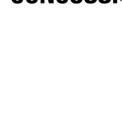


e Trinity Voice is a member of the Florida Scholastic Press Association and the National Scholastic Press Association.

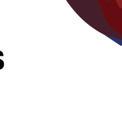


























e Trinity Voice is produced by the newspaper/journalism class at Trinity Preparatory School of Florida. Editorials represent the opinion of e Trinity Voice writer and are not necessarily the views of the administration, faculty, or Board of Trustees of Trinity. e Voice welcomes letters to the editor and freelance articles or photography. All submissions become the property of e Voice. Please send all correspondence to 5700 Trinity Prep Lane, FL 32792. e Voice may also be contacted via phone at 407-671-4140 and via e-mail at voice@trinityprep.org. For information regarding the purchase of advertising within e Voice, contact us by one of the methods mentioned above. The Voice is a monthly publication during the school year (with the exceptions of November and January).

February 2O23 Table of Contents
TABLE OF CONTENTS
VOICE@TRINITYPREP.ORG THETRINITYVOICE.COM @TRINITY_VOICE @THETRINITYVOICE “THE TRINITY VOICE” Cover Photo Anna Miliotes Opinions Olympic Exploitation 22-23 Damar Hamlin
News Chat GPT O4-O5 O6 Duck Invasion Lifestyles TikTok Bans O7 Ticketmaster O8 College Applications 12 1O-11 Ukranian Teenager 13 Teacher Feature O9 Writing Quality Study Tips 14-15 Private Prison GPT in classrooms 26 Page O7 Austin Yuan Page 28 Caden Liu Focus Stereotypes 17 Gendered Phrases 18 Americans 19 Model Minority 2O-21 24-25 Girlboss Problems 27 28 Middle School Basketball 29 Puzzle Page 3O
STAFF

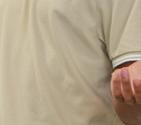
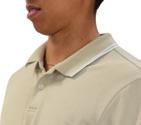
Editors-in-Chief: Marcos Membreno, Jack Ververis

Managing Editors: Ava Savino, Sarah Zehnder
Copy Editor: Kaylee Ortega


Layout Editors: Amy-Ruth Gyang, Reese Taylor
Social Media Editors: David Bryskin, Ana Carolina Marques
News Department: Iris Lei (Editor), Julian Sealy, Alec Diaz, Karthik Stead, Laziza Talipova
Opinions Department: Abby Hernan (Editor), Reese Taylor, Amanda Rose DeStefano

Focus Department: Peyton Alch (Editor), Fay Zhao, Lucy Chong, Zach Kleiman
Lifestyles Department: Taylor Riley (Editor), Jack Aaron, Kaylee Ortega, Boaz Kim, Victoria Berube, Sammy Lou
Sports Department: David Steinberg (Editor), David Hull

Podcast Department: Aetant Prakash (Editor), Mohil Kapadia, Sreekar Nagulapalli
Graphics Department: Amy-Ruth Gyang (Editor), Austin Yuan, Andrew Edwards, Caden Liu, Lia Garibay
Photo Department: Anna Miliotes (Editor), Andrew Edwards, Raheel Patel, Olivia Kortman, Olivia Prince
Fact Checking Editors: Boaz Kim, Julian Sealy
Business Manager: Sreekar Nagulapalli


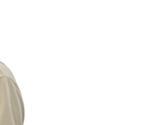




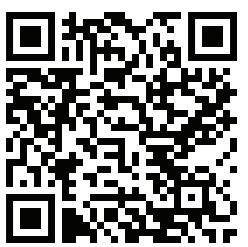




Adviser: Erin Miller


Saint Talk

This Month’s Podcasts:
Ep.6 - Dear Love Doctor
Aetant and Sreekar interview your favorite Trinity couples, hearing di erent persepectives about high-school relationships. Aetant provides advice to anonymous writers, helping them learn and prepare before Valentine’s Day.



Ep.7 - STE(A)M-ing Into The Community
Mohil Kapadia talks with Head of School, Mr. Byron Lawson, and Mrs. Hetal Shah, a math teacher from India about the importance of STEM education. Learn about Trinity’s new STEM building and how Mrs. Shah connects with students from di erent backgrounds.


3 February 2O23 Sta /Podcast
Blurbs by Aetant Prakash, Sreekar Nagulapalli and Mohil Kapadia
Photo and Graphic by Anna Milotes & Austin Yuan
A GENERATED FUTURE

New AI platform ChatGPT may revolutionize
 Article by Ava Savino
Article by Ava Savino
“Greetings earthlings! I am ChatGPT, the AI language model with a twist. I’m here to blow your mind with my ability to generate human-like text with ease. Whether you’re looking for a witty conversation or need some information, I’m your AI. So let’s explore the wonders of the universe, or just have a chat - the choice is yours! Ready to have some fun?”
- Generated by ChatGPT


What is ChatGPT?









Founded by various prominent technology figures such as billionaire Elon Musk and entrepreneur Sam Altman, tech company OpenAI aims to make programming easier for professionals and more accessible to people who want to learn how to code. ChatGPT, also known as Chat Generative Predictive Text, is their most recent project; an AI model released into a freely accessible beta version in November of 2022.
When someone inputs a question into the program, it seems to “understand” and respond in a human-like way, pulling information and sources from the internet According to OpenAI, the program was trained using a method called Reinforcement Learning from Human Feedback (RLHF), a model trained specifically to “satisfy” the user’s request by using predictive algorithms and learning, a process more similar to puppy training than machine. In contrast, non-RLHF models will have a more “code-like” response that feels like it is generated from a computer.
What can ChatGPT do?
With adaptive learning and human-like outputs, ChatGPT can do almost anything it is asked. For example, the program can not only explain almost any topic, but also change how it presents this information. Chief Technology Officer Alex Podchaski said that while he was researching possibilities for the program, he discovered its ability to explain complex topics at the level of a 6th grade student all the way through to 12th.
The program can also provide a wide variety of tasks that are not explanatory in nature, such as giving advice for social situations or finishing tedious writing tasks.
“Long ago, I had a background in corporate writing, and I remember writing dreadfully boring pieces for say the annual report for a corporation,” English department chair Susan Lilley said. “But to be able to have those numbers and have a machine that writes the report…I think that is an advantage in the industry.”
However, the program so far has been found to have many inaccuracies in its responses, sometimes making up outright false information. When Podchaski tested the program’s ability to write a biography about himself, he discovered that the program relayed information he had never heard of before.
“It told me that I was born in Poland and that I immigrated at some point before my birth,” Podchaski said. “You don’t know what [ChatGPT] is pulling, and it’s not capable of giving you sources.”
Some teachers are using these flaws to their advantage–in computer science teacher Susan Frederick’s programming classes, students utilized the AI to create different bugs that would then be fixed by the students.
News 4
Graphics by Andrew Edwards
the way ideas are generated
How are schools responding to ChatGPT?



With the capability for generating responses to school questions and essays, ChatGPT has caused many teachers to reconsider how they implement their assignments. Lilley said that when her seniors first told her about the program in AP English Literature, they began working together to test how the engine would respond to class essay prompts.
“It was shocking that it sort of made sense,” Lilley said. “You could tell it was kind of soulless, but it was fine. That’s kind of amazing and scary at the same time.” Lilley is not worried that the AI will impact her English class, as she says that preparation for the AP exam in May will be mostly handwritten essays in class which cannot be plagiarized. However, she recognizes that other teachers may not be so fortunate.“I expect that our assignments will diversify accordingly, and teachers will be more careful about assignments that can be easily perpetrated by ChatGPT,” Lilley said.
At Trinity, Podchaski is in charge of researching and presenting information about ChatGPT, and his process of determining how Trinity should handle the new AI followed the same protocol as any other technological review. Podchaski said that he ultimately decided to block the software on school wifi due to privacy and legal concerns about the age requirements, until further research could be done. Frederick said that she and Podchaski are working with computer science professors at UCF in order to talk about policies being made at the higher education level and possibly model and advise how Trinity creates policies for the program in the future.
Lilley said that she is also collaborating with her English colleagues at UCF to discuss how assignments should be formatted in order to avoid the potential for plagiarism. However, Lilley says that regardless of policies, prevention can only go so far. “I really believe that who you are really cheating is youself when you don’t do your own work because that is how you grow as an intellect and as a future professional,” Lilley said. Although the current model of ChatGPT sometimes produces inaccurate statements and uses unreliable sources, teachers, students and professionals are hopeful about the future as the program improves with the additional data it receives daily from the open beta program.
What will ChatGPT look like in the future?











“The possibilities are there to make [ChatGPT] very, very accurate,” Frederick said. “[But] our Trinity students are too smart and have too much to offer the world to start relying on some artificial intelligence.”
The owner of ChatGPT has already made announcements on social media of a paid version being released that can even be customized for individual companies using their own data entries and training, further increasing the potential accuracy and applications of the program.
“The basic technology that’s predictive text will never be able to properly mimic a human voice because part of the uniqueness of each of us is [that] we have our own foibles in speaking and writing,” Podchaski said.

to your
News 5 February 2O23
WINTER PARK ENACTS INVASIVE DUCK REMOVAL

The Rock has always been a statement piece in the quad, but a few years back, it captured Trinity’s attention for the nest underneath and eggs within. Muscovy ducks were the cause, and after living in non-native suburban areas for decades, the city of Winter Park has taken action.
On December 14, Winter Park approved a removal program for the invasive Muscovy ducks. The ducks are native in the Rio Grande Valley of Texas, Uruguay and the region of Mexico south to Argentina. According to the Florida Fish and Wildlife Conservation Commission website, Muscovy ducks quickly reproduce and populations can surge in a short period of time. These large populations have a considerable impact on the native species and environment.
“Epecially here in Florida, a lot of [invasive species] can out compete the native species,” science teacher Margaret Smith said. “They end up pressuring them into different niches that they never had to occupy before.”
One example of invasive species challenging native species they now live alongside are Knight Anoles, who have been invasive to Florida since the 1950s. According to Smith, Carolina Anoles, or green anoles, were driven out of their native habitat in Florida by Knight Anoles and took shelter in higher levels of forest cover.
“The Carolina Anole isn’t living it’s full potential which is called its realized or fundamental niche,” Smith said. “It’s living in a realized niche.”
Muscovy ducks are no exception as they carry a multitude of diseases that are transmitted to native ducks. In addition, they are very aggressive.
“I have had some come up to me and be very, very territorial about their space,” Smith
said.
English teacher and birdwatcher Steven Krueger has noticed a significant reduction in bird populations.
to city property and public education. Besides active removal, it also contains plans of modifications to habitat and a re-establishment of native species. According to the Park Ave Mag-

“There’s been a really huge decline in birds over the last couple of decades,” Krueger said. “Anything that adds to the competition is not necessarily positive.”
According to Science.org, a survey done by US and Canadian researchers reveal that 3 billion birds in North America have disappeared since the 1970s. The exact causes have not been determined yet, but there are speculations.
“You’ve got climate change…loss of habitat, I believe, is a big one,” Krueger said. “Cats, to be quite honest. [Outdoor cats] kill millions a year, but that is legimately a top five or six cause.”
The Muscovy duck removal program applies
azine, Director of Natural Resources and Sustainability Gloria Eby said that an experienced trapper will be hired to humanely relocate the Muscovy ducks.
Although Winter Park has started the removal program, Trinity is not joining. There are still some that harbor environmental concerns.
“If you can take [the ducks] out of the system in a humane way, then that’s better longterm,” Krueger said. “Not for the duck, but for the collective environment.”
Article by Iris Lei
February 2O23 News 6
Photo by Olivia Prince
One of the many Muscovy ducks wanders near the Trinity House. The invasive species has created a home for themselves on the Trinity Prep campus.
TRINITY BANS TIKTOK
Article by Alec Diaz Graphic by Austin Yuan
At the beginning of the second semester, TikTok was banned on all of Trinity’s Wi-Fi networks. Students can still access TikTok but instead of using the school’s Wi-Fi, students will have to use their cellular data instead.
is is due to the fact that TikTok has drawn some controversy, as according to an article by e Guardian, TikTok is starting to get banned around the United States “due to national security concerns over its China-based parent company, ByteDance.”
On January 25, Senator Josh Hawley announced that he would be introducing legislation to ban TikTok nationwide.
“In a tweet Tuesday, Hawley said that TikTok is “China’s backdoor into Americans’ lives,” adding: “It threatens our children’s privacy as well as their mental health. Last month Con-
gress banned it on all government devices,” according to an article by NBC News.


Chief Technology Officer Alex Podchaski explained that TikTok was banned on all of Trinity’s Wi-Fi networks due to the national security breaches and for the encouragement of the student’s proper use of tools.
“One of the biggest concerns is that we have, it’s the data, it’s part of our responsibility of having the networks and what we allow on the networks and don’t allow are, we have to make sure that we’re following certain rules as well,” Podchaski said.
Senior Reyna Mapa, said she opens TikTok at least once a day, but wouldn’t be upset if it got permanently banned.
“I think that Trinity banning TikTok on WiFi would be fine and could even encourage
students to have more face-to-face time instead of face-to-screen time,” Mapa said.


While Podchaski and Mapa are okay with the ban, Guidance Counselor Rylan Smith, who teaches social media and ethics, said that she struggles with the ban of not just TikTok, but any social media.
“I think social media developers are smart and I think anytime you ban something, then people are just going to find another way and so you’re going to constantly be one step behind. Instead, I like the approach that we take in the social media and ethics class, which is I want consumers of social media to think about the ethical implications of their actions, using those social media apps, and why, what ethical implications are out there?” Smith said.
Trinity isn’t the only school to ban TikTok on its Wi-Fi networks as a form of protection. According to an article by Forbes, some colleges that have banned the use of TikTok so far are the University of Texas at Austin, Auburn University, Boise State University, the University of Oklahoma, Oklahoma State, and the University of Central Oklahoma.
On January 12, e University of Florida sent out a message advising students that they should not use TikTok anymore, as according to an article by the Tampa Bay times, “ e university treats the protection of UF data — academic records, research, financial information, and other sensitive, personally identifying information — as an institutional priority.”

Although TikTok still has a chance to be banned from the App Store and Google Play Store, people could still download TikTok by jailbreaking their phones.



“You’re now choosing to do something that you know is dangerous. Okay, I can only protect you from yourself so much with laws and other regulations,” Podchaski said.

7
February 2O23 News
ALL MY HOMIES HATE TICKETMASTER
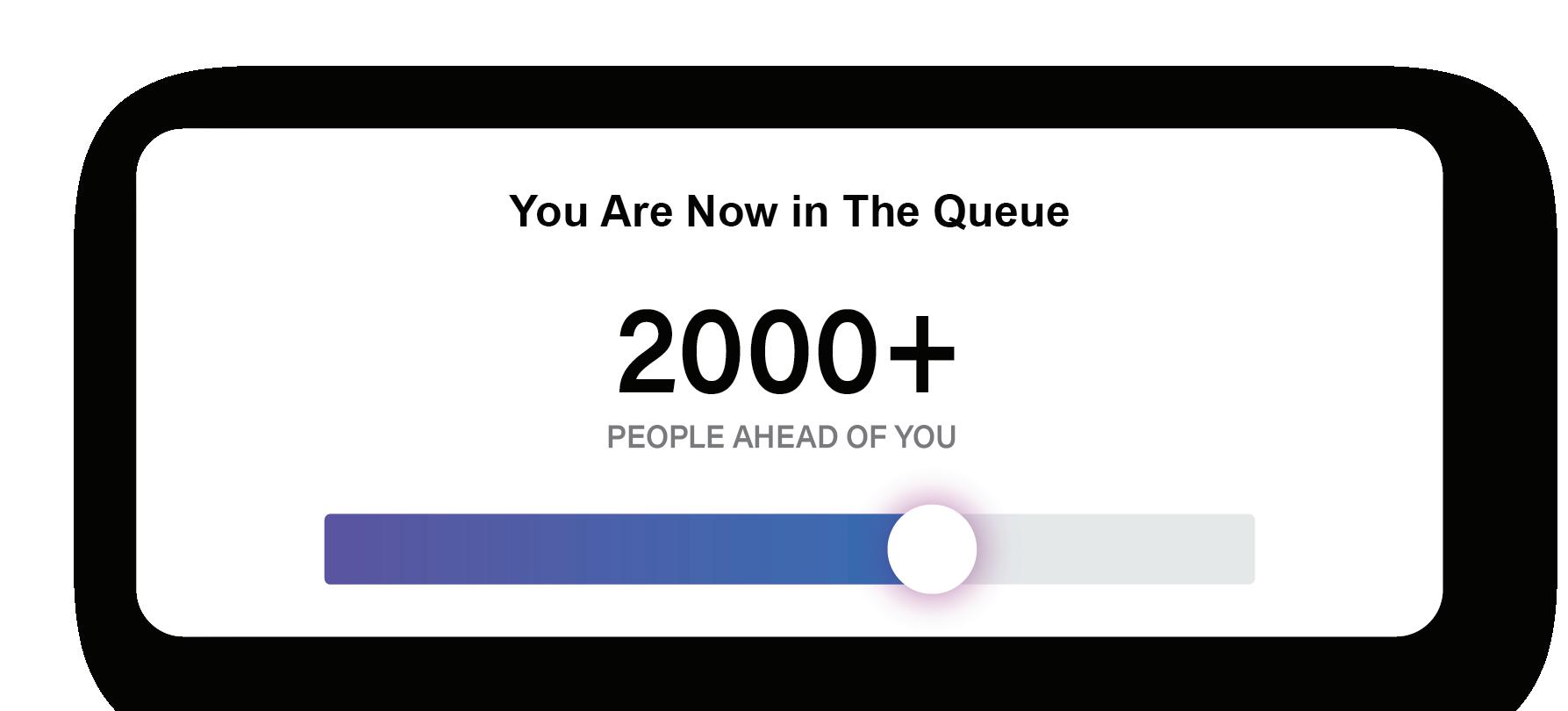
Ticketing site issues headline controversy in Senate, on campus
Article by Julian Sealy Graphic by Andrew Edwards

This past November, the ticket sales and distribution website Ticketmaster crashed while fans of superstar pop artist Taylor Swift were attempting to purchase presale tickets for her upcoming “Eras” tour. Ticketmaster attributed the crash to heavy site traffic, but many users claimed the problem was poor customer service. The company publicly apologized to Swift, but many fans were left ticketless as a large number of tickets were snatched up and used on resell websites.

Senior Erika Zavaleta was one of millions of Swift fans who was left ticketless.
“I know that there were three opportunities to get tickets and we tried two of them and then the third got canceled, so that was annoying.” Zavaleta said.
According to calculations by Bookies.com, fans have a 2% chance of getting general sale tickets at face value (1 in 50 shot). Odds improve to 5% (1 in 20 shot) if you have a pre-sale code.
Taylor Swift fans are not the only ones who have encountered problems with Ticketmaster. Superstar country artist Zach Bryan and fans have also expressed their dislike of the ticket-
ing website. Bryan and fans took to Twitter to complain about ticket prices.
“If I could personally send a free hoodie to anyone who has ever used Ticketmaster I would,” Bryan said in a tweet on November 17. “[I] know everyone needs to rebuild their finances after Ticketmaster purchases.”
The controversial issue has also been taken to the Senate. In an article from ABC News, Senator Amy Klobuchar described Live Nation’s conduct with Ticketmaster as the definition of a monopoly -- which the company denied -- and said that American consumers suffer inflated ticket fees due to the lack of competition.
“The live event experience has become increasingly out of reach for so many fans,” Klobuchar said. “One GAO [Government Accountability Office] study found that 27% of the ticket price was the fees. A recent study found that for some tickets, it’s as high as 75% of face value.”
Zavaleta said how she thinks Ticketmaster could improve their ticket sales.
In addition to his long thread of tweets, Bryan also released his first live album titled “All My Homies Hate Ticketmaster” live from Red Rocks Amphitheatre.
“I just think they should have made you put your [fan] code before you got in line instead of waiting to buy the tickets to get the code or to put in the code,” Zavaleta said. “Then, fewer people would have been in the line and they would have been able to actually have the people who had the code buy tickets.”
February 2O23 News
TRACING THE TRACK TO TEACHERHOOD




How Trinity teachers found their calling
Article by Jack Aaron
Photos courtesy of Brandon McDermed and Christopher Newman
A common misconception that students have about teachers is that their instructors know from the beginning that they want to go to college, get a degree in education, and ultimately become a teacher, but this is simply not true. Some teachers start o taking care of rhinos, while some are defending pharmaceutical companies in the courtroom. According to science teacher Brandon McDermed, working at the zoo and in a classroom are not entirely di erent.
“ ere’s a lot of similarities,” McDermed said. “I always make the joke that I’m still herding small things into areas and making sure that they’re fed and taken care of and cleaning up after them.”
Brandon McDermed
Prior to coming to Trinity, McDermed was a zoologist. He said he always had a passion for helping animals even at a young age.
“I was one of those kids that was constantly rescuing baby birds falling out of trees, bringing home tadpoles, trying to care for them,” McDermed said.
McDermed’s passion for animals remained strong throughout high school and college. Just as he planned, he became a zoologist and took the opportunity to do what he was passionate about. McDermed rst worked at the Miami Metro Zoo for four years and then Disney’s Animal Kingdom for 11 years. e reason McDermed moved from Disney to Trinity is simple, family. When Animal Kingdom added the Avatar attraction, it altered the hours of the parks because of the bioluminescence e ects. Due to this change in hours of operation, McDermed spent less time with his family. He knew he needed a change in professions, so after consulting with his wife they came to the conclusion teaching would be a great t for him.

Eric Schneider
Schneider is a mathematics teacher as well as an alum from the year ‘05. After graduating from college at Sewanee University in Tennessee, Schneider was unsure of where he was going to go professionally.

“I was very uncertain of what I wanted to be,” Schneider said. “And then [I] started coaching, realized I enjoyed high school, and wanted to get into teaching, and I’ve loved it ever since.”
Schneider’s rst teaching experience was at the college level at Borussia University in Kentucky, teaching a management class on sports facilities. Afterwards, Schneider moved to the highschool level for education at Greenbrier High School, located in Tennessee.
Moving to Trinity nwas a di cult decisison for Schneider. He was loving his previous teaching job in Tennessee, but when he became an uncle, he took the opportunity to move closer to his family.
Christopher Newman
Newman is a fellow here, but before teaching he was a defense attorney working in the eld of medical malpractice, so he would help pharmaceutical companies if they were sued.
After being an attorney for four years, Newman realized he was not ful lled with his job, so he took some time to re ect and switched professions to real estate. After another four years, this time as a real estate agent, Newman took time to re ect and plan for his future.
“I thought very carefully and intentionally about my strengths in particular, the things I like doing and the things I was good at,” Newman said. “And as I thought more and more about those, I kept thinking to myself, God, this looks like a teacher.”
Newman is now pursuing a full-time teaching contract, hoping to stay here at Trinity. His experience in a variety of jobs has allowed him to discern that it is okay to not nd the profession right for you on your rst try.
“Don’t stress or worry about the fact that you may not know exactly what you want to do in life, it’s okay,” Newman said. “It’s okay to change. You might get it wrong.… And it’s okay to follow your heart and chase whatever is right for you.”
While a zoologist for 15 years, McDermed (left, black cap) helped carry a baby gira e.
Lifestyles 9 February 2O23
During his four years as a lawyer, Newman was a medical malpractice defense attorney.
ADOLESCENCE IN FEAR Life as a teen in war-torn Ukraine
Article by Carol Marques Graphic by Lia Garibay
“The war has started” were the first words 15 year old Ann Tysevych heard when her mother woke her up on February 24, 2022. The thunderous bomb and sounds of warfare Tysevych thought were just a dream turned out to be reality. That Thursday morning marked the beginning of an indefinite change in life in Ukraine.
Living on the outskirts of Ukraine’s capital, Kyiv, Tysevych was near several, early Russian attacks. She and her family were in shock when the attacks first began. Near Russia’s primary target, they knew it would be unsafe to remain in their apartment.
“We weren’t doing anything in the beginning [of the attacks],” Tysevych said. “I started telling my parents that we should definitely do something, that we needed to go somewhere before it got even worse.”
According to Tysevych, leaving home was chaotic, almost apocalyptic. She and her parents drove in the car-packed streets, bumper to bumper, for over three hours to her grandparents’ house in Vinnytsia. The next day, they drove further west to stay with her other grandparents in Mukachevo.
“We stayed at my grandparents’ for 3 months,” Tysevych said. “For the first two months, my whole family was there, but then my parents decided to start volunteering or do some work in Kyiv.”
Her parents returned to Vinnytsia to volunteer with food and supplies. After staying for a few weeks, her parents returned to their jobs in Kyiv to support their family.
Tysevych joined her parents in Kyiv at the beginning of the summer, around four months after the beginning of the attack, they felt uncertain of what the future would hold.
“I wanted to believe that [the war] would not last for a long time,” Tysevych said. “But when we saw news that Russian soldiers were almost in Kyiv, it’s hard to believe it is not going to last long when they are close.”
Now almost one year since the start, the
constant attacks and con- stant fear of her family’s safety is Tysevych’s new normal.
Her life before war was like any other teenager’s. According to Tysevych, she would go to Kyiv to hang out with friends, eat out, and spend some time by the Dnieper river that separates both sides of the city. Tysevych attended school in person and went on vacations with all of her family.
For Tysevych, the first two months of the war were the hardest and most depressing. She was not attending school and had nothing to do at her grandparents’ home.
According to AP News, in September 2022, 51% of Ukrainian schools opened for in-person education, with the option of remote still available. With safety concerns still in mind, schools that do not have quick access to shelter or are located close to active war zones still remain online.
“Some schools have big shelters that let the whole school be hidden inside the shel-
ter,” Tysevych said. “My school doesn’t. Only first through fourth graders are going to my school.”


As a sophomore, Tysevych continues taking lessons virtually, due to the capacity limit that her school’s shelter holds.
According to NPR, since the Russian invasion in February up until September 2022, 2,177 education facilities have been damaged and 284 have been completely destroyed.
Online school has not been easy, according to Tysevych. Along with the struggles of virtual learning, Tysevych has to deal with power and wifi shortages.
“Russia destroys our electricity
February 2O23 Lifestyles
factories,” Tysevych said. “We then have no light or heat in our house. It would be nice to have light all the time.”
Most Ukrainian cities’ send electricity to valuable locations, like hospitals. To deal with this problem Tysevych’s family bought a generator.
“When there is an alarm my parents won’t allow me to go to Kyiv because it is really dangerous,” Tysevych said. “Rockets are usually sent to the center of Kyiv… I cannot remember the last time I visited.”
The alarms limit many activities, as restaurants and malls close whenever an alarm sounds. According to Tysevych, she is still able to enjoy time out, which she feels is lucky in comparison to many cities in Ukraine.
“I have my family, my house, my friends, and we still hangout,” Tysevych said. “Cities like Kherson were occupied within three
Even though Tysevych’s life has taken a complete turn, she remains in Ukraine due to her mother’s wishes. According to Tysevych, her mother was extremely stubborn in wanting to stay in her home country and no matter the danger, she wanted to help.
“It is hard to do something in a situation like that,” Tysevych. “My parents would never leave Ukraine… if only you could see how my mom was crying, she felt like she couldn’t leave and had to help.” Many Ukranians feel this same prideful attachment to their home country. Many citizens have taken it upon themselves to stay behind and help.
“I really realized that Ukranians are really brave people and we will really do anything for our country,” Tysevych said. “Our people are not giving up.”
As the war goes on many Ukranians have felt the need to isolate themselves culturally from Russia. Many Russian items and traditions are being changed and not practiced in Ukraine anymore.
“Before war a lot of people listened to Russian music and there was no problem,” Tysevych said. “It is really important to stop listening to their music to stop giving Russia money. They are using the money and turning it into bombs and rockets.”
“Now we have better generator so we have better wifi,” Tysevych said. “It was a problem for me because I had no light and no connection so I just didn’t go to lessons.”
Due to the attacks, hanging out with friends has become dangerous and confined.
months and people were not able to get out, markets were changed by soldiers.”
According to Le Monde, the number of Russian controlled territory has decreased as the war continues. In March 2022 Russia controlled 25% of Ukraine’s territory and in November, Ukraine was able to lower the number to 15%.

“(The Russians) are not only destroying our military items, they are destroying innocent’s houses, kindergartens…” Tysevych said.
As of January 22, 2023, the Office of the United Nations High Commissioner of Human Rights verified 7,068 civilian deaths as of Russia’s Invasion 438 of those deaths were children and 11,415 people have been reported to be injured, according to Stastica. However, it is predicted that the number of injured could be higher.
The war has been an unexpected experience but Tysevych feels that the help from the rest of the world has been really valuable.
“I am grateful that people are helping Ukraine,” Tysevych said. “It is really helpful to just share information, repost something to your Instagram…this helps more people see and know what is happening.”
For more ways to help Ukraine scan code to see helpful websites provided by NPR.



February 2O23
Lifestyles
COLLEGE APPS CONTINUE TO CLIMB
Applications surge as admissions become more selective
Article by Boaz Kim
Graphic by Lia Garibay
According to CommonApp, the average applicant submitted 6.22 applications from 2021-2022. However, senior Paola Riestra, who submitted 24 appplications, said that over the span of three months she submitted 20 of her 24 applications through CommonApp because that was the max limit and 23 out of 24 of her applications consisted of supplemental essays.
“I only get one chance to do this right so if I do not take the chances I have, then what was the point of getting all these opportunities?” Riestra said.
While Riestra’s experience may be a little extreme, it is not that far fetched from the annual stress of college admissions that Trinity seniors experience, trying to finish college applications, book tons of meetings with college counselors and meet deadlines for supplemental essays, transcripts and everything else that comes with the hectic process of college applications. As deadlines get closer and students await decisions, they start to feel overwhelmed. This, coupled with college acceptance rates getting more and more difficult by the year, many students feel the pressure of making sure they get into a college and feel the need to submit tons of applications.
Statistics show that many colleges have become increasingly hard to get into each year. The University of Florida’s average acceptance rate from 2012-2022 was 40.82%, and this year it has dropped to 30%. Additionally, Florida State University’s average of 47.12% dropped to 37% this year.
“So, part of it is a fear of not getting in because of the low acceptance rates,” Riestra said. “But, on the other side, you just never know what they’re looking for, or if you fit their standards, so why not just try everything.”
According to a March 2022 Common Application report, the number of submitted applications rose by 21.3% between 2019-2020 and 2021-2022. Di-

rector of College Counseling Christine Grover said that with the introduction of CommonApp, the application process has become more accessible to students. Even though the college application process has gotten less daunting, in regards to accessibility, Grover recommends that students make sure they are submitting high quality applications to colleges that are “fit” for you.
“Ideally, I would recommend applying to three reaches, three possibles, and three likelies, and instead of focusing on the name of the colleges, focus on the best fit college for them,” Grover said.
Another additional factor of rising college application submissions is the transition to test optional. Grover said that the “test optional” option for schools encourages many students to apply there.
“Test optional was a huge shift in applications because with test scores, students used
to kind of self sort, because if a student knows that a school has higher average test scores than what they could achieve, they would not send their application there,” Grover said. But now with test optional schools there is that feeling of well, I might as well send my application there.”

So is there a “perfect” number of schools to apply to? Grover said that there is no formula or magic number that will guarantee a student’s success in applying to colleges, but said that by focusing on the schools you are really interested in will make the process a lot easier.
“I would tell students to not feel panicked and pressured because they are much better off to pick the schools that are the best fit for them and really really work on those supplemental essays and just get really excited about that school,” Grover said.
February 2O23 Lifestyles 12
THE ? OF QUALITY WRITING













How the level of student writing has declined since the pandemic
 bye Laziza Talipova
Graphic by Austin Yuan
bye Laziza Talipova
Graphic by Austin Yuan









During the pandemic, families came together and discovered new hobbies along the way. Schools leaned on online platforms and teachers found methods to cope with classes virtually.
is eventually led to writing papers online, and it detered the focus and quality of writing for many students. As we have seen, the pandemic has shifted many of our daily activities online, which has had a signi cant impact on how people compose and consume written words.





emails, instant messaging, and social media, to stay connected. As a result, the quality of writing has su ered, as more and more people are relying on informal language and abbreviations, such as “LOL”, “U”, “R”, and “BTW.”


“Sometimes, students like to play with the personality of characters in their writing,” McFarlan said. “But if you’re going to try and get published, or if ur submitting something like essay form quality, u don’t want to do that because it just gives o an unprofessional vibe.”
Many students have had to adapt to school remotely, which has meant that emails, books, and other written documents have become the primary forms comunication. is has resulted in a decrease in the quality of writing, as many students are more accustomed to a casual style of writing.
“As the pandemic enters its third year, a cluster of new studies now show that about a third of children in a variety of grades are missing writing benchmarks, up signi cantly from before the pandemic,” e New York Times said.













e paper has voiced their concerns with this issue as well. According to their reporting, early reading and writing skills were @ a 20-year low last fall, which the researchers described as “alarming”. Becuz of this, writing performance in the United States has dropped in 2019, according to national and international exam scores.








Before the pandemic, there was already a trend of casual writing due to the rise of texting and social media. But the pandemic has accelerated this trend, as more people are relying on text-based communication, such as



“Frequently seeing to/too written as 2, or people written as ppl, might mean that these kinds of spellings could start to creep into students’ formal writing,” e Washington Post said.






































































Sophmore and Skylight editor, Grayson McFarlan, has seen and edited many pieces of writing for Trinity’s Skylight.
fall, which the researchers described r of




































































































“It’s been pretty interesting editing,” McFarlan said. “Of course, there are some mistakes that are just weird. It’s like students don’t have a spell checker on their documents… we’ve seen plenty of mistakes and abbreviations, it’s crazy.”
McFarlan also belives that although the abbreviations may be an accident, some students choose to show personality and unique characteristics through the diction choices made.
“Now, schools are under pressure to boost literacy as quickly as possible so students gain the reading and writing skills they need to learn,” e New York Times said.
Feburuary 2O23 Lifestyles 13
“Of course, there are some mistakes that are just weird. It’s like students don’t have a spell checker on their documents…we’ve seen plenty of mistakes and abbreviations, it’s crazy.”
- Grayson McFarlan, Sophomore
e fact that many individuals multitask while writing has made written communication even more problematic. Writing emails and other papers while doing other things, such as scrolling through social media or watching TV, is a common practice. Errors and misunderstandings more likely to occur while ur multitasking. FIX Please fix these mistakesASAP!
1O OVERLOOKED TIPS TO STAY FOCUSED IN CLASS
Article by Sammy Lou
Graphic by Caden Liu

A student is sitting slumped in a chair at the 60-minute mark of an 80-minute class. Time slows down, and the teacher’s words begin to disintegrate into an incomprehensible Charlie Brown teacher-esque nonsense. With thoughts of lunch being the only thing on the student’s mind, it’s seemingly impossible to stay focused. Since everyone is a different kind of learner, here are some ways to combat distractions and pay attention in class.
Taking Notes - Not only does taking notes help with focus, it also gives you a resource to look back at later for tests. “Teachers mention important parts of the topic in class, so trying to pay attention and trying to take good notes is half of the success,” Latin teacher Bozena Lawson said. Taking notes also helps you focus on the key parts and important details of the lesson, making it easier for you to understand the information. It also makes it easier by teaching you how to prioritize and organize these key parts.

Drawing the Lesson - Doodling while listening to a lesson helps many students absorb the information, including junior Sam Miller. “I usually doodle, just because it's a tactile thing,” Miller said. “That does help me focus and gain information. I'm a person who likes to have something to do tactile and listening wise, so it helps me focus in the sense that I'm doing something with my hands. It makes it a bit easier to listen too.” While any kind of doodling during class will help stimulate your brain, doodles that relate to the lecture can help to simplify complicated concepts. For example, if a student doodled an animation of mitosis, then it could help the student more than staring at plain biology notes for hours. Professor Jesse Prinz from New York University claimed that doodles are similar to postcards. If you forget parts of a lesson, looking at a doodle can help bring parts of the lesson back to you, just like how postcards can help you remember parts of a trip.
Squishy Balls - Research shows that many sources and studies have found that physical activity like fidgeting can help prevent distractions and lead to better focus. According to Upper School Counselor Sarah Hill, “A lot of times, students that are kinesthetic learners need some kind of movement. Sometimes people do need something at their desk, as long as they're not distracting others. A lot of times if they tell the teacher: ‘Hey, this is a great way to help me stay focused,’ they will get permission to use it in class and they won’t distract others.” Many students who focus better with movement use stress toys. According to a study, students who were given a squishy stress ball to use in class were less distracted. However, other fidget toys like the fidget spinner don’t work because once it starts spinning, it doesn’t require you to continue spinning it, as opposed to the stress ball’s ability to be squeezed over and over in a short span of time.


Twiddling Your Thumbs - Small movements like twiddling your thumbs and tapping your foot fall under the same category as the stress balls. An alternative to using a physical object, these methods could be better than actually having something in your hand because it’s less noticeable and distracting. It also skips the hassle of having to remember to bring an object to and from school and each classroom. Fidgeting sometimes is done subconsciously, but it also helps when done deliberately. Either way, fidgeting subconsciously and deliberately both help with focus.



February 2O23 14 Lifestyles
Eating a Snack - Studies have shown that being hungry takes away from students’ concentration, so going to the Grille before class or carrying a snack is a good idea. Although eating during class can be beneficial to one's concentration, it's not always allowed. Hill believes that eating during class is usually a distraction, but it can be ok if its small. “If you have a big meal like a big Chick-Fil-A bag that's crumbling, it's a distraction to the person and to others,” Hill said. “If you have like a little snack bar, usually teachers are okay with that because you're just getting a small snack. It depends on the class and the environment.”

Chewing Mints (Because Gum Isn’t Allowed) - You can’t always eat in class, especially during a science lab involving chemicals or a Socratic seminar in English, so mints are another option. Although gum is the more popular option, chewing it goes against the handbook, so mints are the better alternative. The peppermint in mints is a great remedy that can help boost memory and concentration, and they also provide a relaxing effect and an increase in focus. Spearmint is also a good booster of memory and attention. There is a difference is taste, as peppermint has a sharper flavor, while spearmint’s flavor is more subtle, so it comes down to which one you prefer.

Choosing Where To Sit - The best spot to sit in the classroom is different for everybody. “Some students like to be in front because they feel like they get distracted in the back,” Hill said. “Some students like to sit in the back thinking that they feel a little bit safer, or like they’re in a little comfort zone.” Sitting in the front also makes it easier to see the board. Students should be honest about the best place to sit and then sit there, even if it’s not next to a friend or if it’s more uncomfortable. Not all teachers allow students to choose their own seats. However, letting the teacher know if you focus better in a certain spot in the classroom is always an option.

Raising Your Hand - Choosing to raise your hand and participate in class can be hard, but it’s a great way to stay engaged. “Participating is sometimes hard for students,” Hill said. “They don't always want to raise their hand, especially if they're not sure of the answer. But I do think that the more that they engage means they are more on pace with the teacher and interacting.” Setting goals to try and raise your hand more in class could help you feel more comfortable raising your hand on a regular basis.
Looking Forward to Class - Having a positive attitude can help a student relax and have better concentration. Having a good attitude includes looking forward to class and being willing to stay alert. “I always try to tell my students that what they are getting from the class is really up to them, and that they need to take ownership of their learning,” Lawson said. “When you think: ‘Okay, I really want to learn this particular topic,’ I've seen that results are better because students pay a little more attention, take better notes, and make an effort to learn.” Many students find it difficult to be positive on a block day when there’s still 40 minutes left in class after 40 minutes have already gone by. One thing that can help with this is by finding motivation.
Finding Motivation - One way to help you achieve a positive attitude is by taking your assignments and tests seriously. When you know that a big test is coming up, and you’re trying to keep an ‘A,’ use the test as motivation for you to concentrate during the lesson. Pressure can help some people focus. “I do think when there is an assessment, whether it's a test or a quiz, students are more likely to pay more attention,” Hill said. “Especially knowing that they're trying to gain and absorb as much information as possible for the assessment.” It’s also important to take your classes themselves seriously. Whenever you feel yourself spacing out during a lecture, just remember that it’s better to spend 80 minutes in class paying attention to the lesson than to spend 3 hours at home trying to learn the material on your own.





15 Lifestyles February 2O23
Remember that everybody is a different learner. So it's up to every student to find what works best for them, even if it’s not on this list.
THIS MONTHS FOCUS TOPIC:
Stuck in the Stereotype: 17
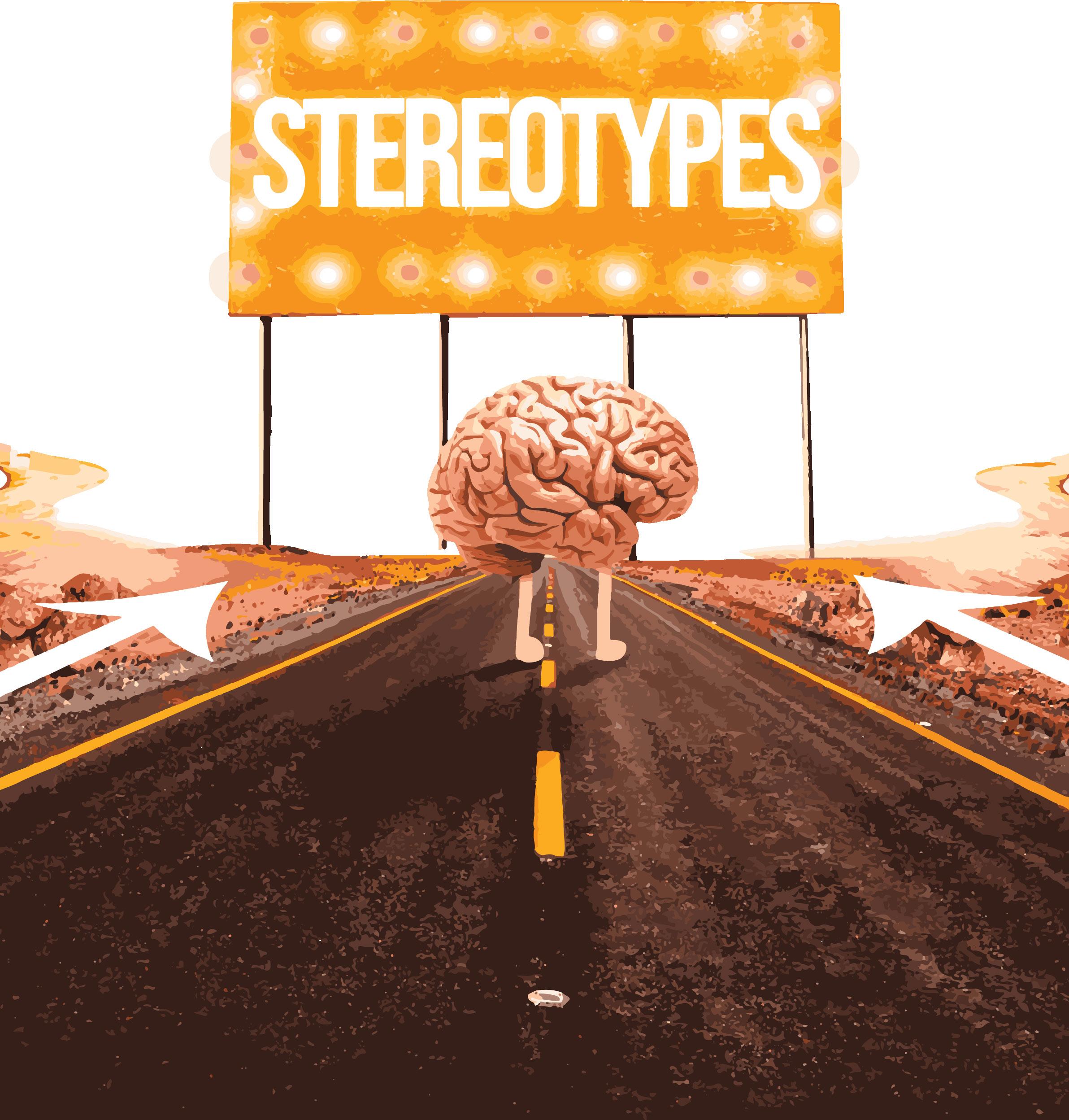
Unspoken Emotions: 18
Don’t Judge an American by Their Flag: 19
Broken Ladders: 2O-21

February 2O23 Focus 16
STUCK IN THE STEREOTYPE
Article by Peyton Alch Graphic by Caden Liu
Stereotypes have existed since the start of human history; they have played a significant role in the way society functions and impacts how people interpret the world around them. This process was helpful in the past when these assumptions were crucial to survival, but now can be incredibly harmful when it seeps into modern society.
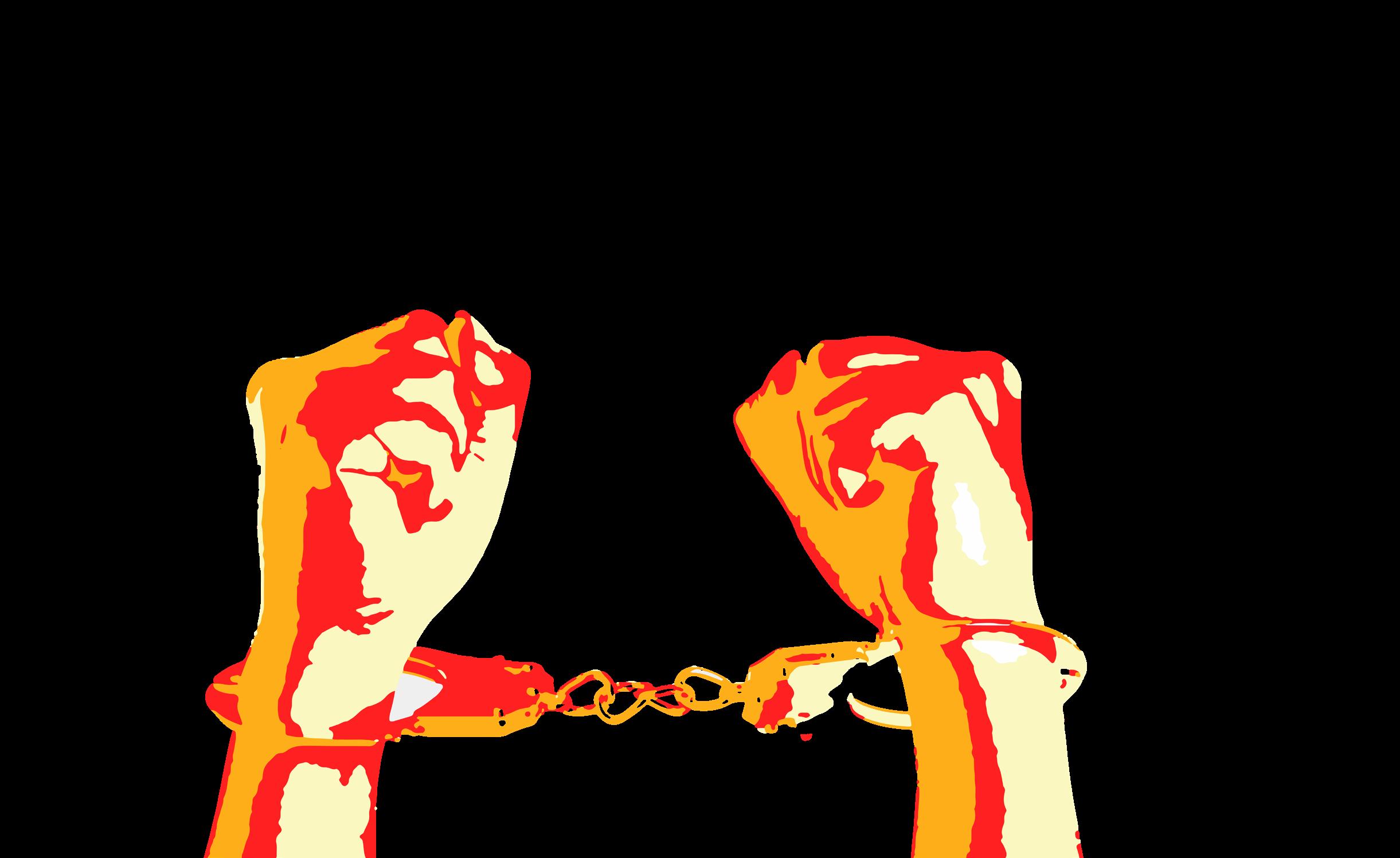
“Stereotypes are how our brain works,” psychology teacher Donna Walker said. “Our brain is constantly seeking to simplify and categorize the world around us.”
A study published in the Nature Neuroscience journal reported that the neurons in the brain that respond to things such as race, gender and emotion are linked by stereotypes, impacting the way we immediately perceive people upon first glance.
“It’s an evolutionary advantage to accept what the world around you presents,” Walker said. “It would take decades or generations to lose that idea.”
tionary roots, stereotyping is difficult to combat. Scientists have discovered that stereotypes have a psychological impact on individuals’ performances.
“Stereotype threat” is a psychological phenomenon that refers to the fear of doing something that would play into the negative stereotypes associated with a social group.
Social psychologists Claude Steele and Joshua Aronson conducted a study where they observed stereotype threat. They found how racial stereotypes can impact the expression of intellectual ability. When told that the test was “diagnostic” and would test their intellectual abilities, Black participants performed worse than white participants. However, when they were not given this description, both groups of participants performed similarly on the test. The impact that these stereotypes had on the test participants went so far as to impact their performance, reinforcing the stereotypes surrounding race.
“It all depends on if society is willing to dis-
Journal article stated that boys were dressed in pink because it was a stronger, more decided color, while blue was more acceptable for girls because it was considered dainty.
As time went on, girls were reassigned pink because of how close it was to red, a romantic color, and women were considered more emotional. This shows how stereotypes have the ability to evolve through a changing society.
A study conducted by The British Psychological Society investigated the development of gender-stereotyped color preferences. Children from the ages 7 months to 5 years were asked to choose different colored objects, one of them always being pink. By 2 years old, girls chose pink more often then the boys and as the boys got older, they had an increasing avoidance of pink.
The boys’ aversion to pink at a young age showed that assigning specific colors to gender reinforces stereotypes and continues to impact younger generations.
“Unfortunately, we have very negative stereotypes about specific groups of people,” Walker said. “But I think stereotypes can also make people want to work against it.”

Many researchers say stereotypes evolve like language, changing and developing as they pass from person to person. Gathering the motivation to look beyond stereotypes can start a much-needed conversation about their impacts on society.
As parents begin to shift away from traditional gender stereotypes and start to embrace gender neutral products for their children it helps create a less prejudiced, confirming society. This gives the younger generations an opportunity to grow and view the world outside of the stereotypes they are born into.
“Stereotypes will always exist for as long as we have humans because that’s the way our brains are designed to work,” Walker said. “It helps you deal with that person to negotiate, navigate, and communicate with someone that you’ve never met.”
February 2O23 Focus 17
SPOKEN EMOTIONS
The a ects of emotional gender stereotypes


 Graphics by Andrew Edwards
Graphics by Andrew Edwards
In the Disney movie “Inside Out”, little gures in the protagonist’s head represent the various emotions she feels with sadness and disgust being female and anger and fear being male. While, according to the director, the speci c pairings were made ety associates certain emotions with each gender.
don’t want to hire this person, train them, spend all this time doing that, and then they’re going to go get married and have children and quit working’,” Lawyer Leigh Zehnder said.
for comedy, it also mirrors how soci-


Emotional gender stereotypes have been around for many years, and are often reinforced through everyday phrases. Some were insults like “stop being a drama queen,” while others were encouraging like “man up.” However, all of them dictate what emotions are accepted in each gender.
“Everybody handles emotions differently,” health and wellness Dee Starling said. “If somebody doesn’t handle it, according to the stereotype, like girls, if they show anger, they’re often called the B word. And if guys cry, they’re often called unmanly or wimpy type names”
With this assumption many people associated lawyers with men in suits and never a woman as men made up the majority of lawyers. According to 2Civility, a law website, from 1950 to 1970, only 3% of all lawyers were women, solidifying the fact that men lawyers are the norm.


“[When] I was a younger lawyer, I would walk into a courtroom, most people in the courtroom would assume that I was the court reporter,” Zehnder said. “ ey just assumed I was the one there to take everything down, and they never assumed that I was a lawyer.”
Women in power and CEOs receive similarly prejudiced treatment. According to a report presented by the Women Business Collaborative, of the 500 largest corporations in the U.S., only 8.2% have female CEOs. Also in a 2016 McKinsey study, women who negotiate are 30% more likely than men who negotiate to receive feedback that they are “intimidating,” “too aggressive,” or “bossy”.












According to Fawcett, a website on gender equality, 69% of men aged under 35 said that gender stereotyping of children has a damaging e ect on perceptions of what it means to be a man. e unspoken rule is so ingrained in society that it is never really questioned or talked about.
“If people don’t know how to manage stress or express their emotions, a lot of people get depressed, especially teenagers around this age,” Chen said. “You can be feeling a lot of very strong emotions, and you don’t have anywhere to kind of get rid of them.”
As both men and women continue to face these stereotypes, acknowledging and discussing these unspoken emotions is key to putting an end to
“People are starting to understand that guys have the same emotions as girls, and it doesn’t make you feminine, it just makes you acknowledge your emotions,” Starling.
ese stereotypes can also have as many women, because back then
Oftentimes, girls will internalize their emotions because of the stereotypes.

more serious outcomes. Women receive fewer opportunities in the justice system, for example, they are often steered away from violent cases because of the image that women are incapable of handling criminals. According to the Wall Street Journal, in criminal cases, men are nearly four times more likely than women to appear as trial attorneys. According to the Pew Research Center, 42% of women in the U.S. say they have faced discrimination in their job because of their gender, and are also not hired as much because they are seen as too busy with caring for children and raising a family to work a full time job.
“A lot of the big rms didn’t hire it was acceptable to think, ‘well, we



“It holds some girls back because they don’t want to be labeled or stereotyped,” Starling said. “So a lot of times, they brush their emotions under the rug and try to pretend that they don’t exist. at can a ect them, being unable to express your emotions can hold you back from who you are.” is problem isn’t exclusive to women; Men are also often forced to suppress their emotions because of the pressure to maintain a stoic public image. is can lead to men ignoring their own feelings or expecting that society will dismiss their feelings if they even express them in the rst place.
“When they’re upset or really happy, you don’t see guys just crying in public or screaming for joy or anything like that,” Sophomore Jerry Chen said. “You’ll get some disapproving glances, maybe some frowns. It’s like an

unspoken rule that you’re not supposed to do it.”
Some celebrities, such as Serena Williams, Taylor Swift and Harry Styles are also using their platform to speak out about gender stereotypes and toxic masculinity.
Businesses are also combating unequal opportunities by providing special organizations like Women in Manufacturing, Girls in Tech, and Women Who Code that support women in industries that are male-dominated. Even in these industries, more and more women are
On a smaller scale, little steps like nding ways to release emotions like journaling, talking to a close friend or family member, and exercising can help people overcome these stereo-
“You can help knock down barriers and stereotypes if you acknowledge that we’re emotional human beings,”

hired each year. types. Starling said.

Focus
the stigma.
DON’T JUDGE AN AMERICAN BY THEIR FLAG

American stereotypes may be based on reality, but get distorted by media
Article by Zach Kleiman Graphic by Caden Liu
Over two million people watched the latest seasons of TV show “Family Guy” and “American Dad.” Both of the long-running shows’ popularity lies in their humor and ability to mock the stereotypes often associated with the U.S., such as obesity, gun violence and fanatical politics. These themes depict and generalize America in a negative way, influencing today’s perception of a “typical” American without providing context or background.
Given its presence economically and politically, America has always been in the spotlight on the world stage. High-profile events such as gun violence, COVID-19, and elections have shaped the American image on the international scene. By exaggerating these stereotypes, “Family Guy” and “American Dad” offer a form of social commentary on American society and the issues it faces.
POLITICS
Though not exclusive to the U.S., the two-party system has created a polarized political landscape that has garnered more attention and stigma internationally. Countries like Germany and Sweden have a multi-party system, where a greater variety of people’s opinions and beliefs are represented.
A Pew Research survey found that political divisions are less among moderates on the political spectrum and greater among those who are the most active in the political process and have the biggest platform. These divisions highlighted in the media and perceived internationally are usually not representative of the majority of Americans.
“I think some American people are very quick and crazy about politics, and they’re like, ‘Okay, if you don’t have the same opinion, I’m not even going to listen to you,’” 10th grade German exchange student Moritz Ernst said.
According to an International Relations survey, many international citizens believe that the U.S. is less respected today than in the past due to the actions of recent presidents, regular mass shootings and fighting for basic liberties. In line with this trend, 93% of foreign affairs
experts share the same beliefs. These notable political events, that often seem unique to the U.S., have understandably reinforced the American politics stereotype held abroad.

OBESITY AND FOOD
According to Our World In Data, 36% of U.S. adults are obese, while only 13% of adults are obese worldwide. However, the issue of obesity receives a significant amount of attention and focus in the United States compared to other countries.
International researchers say this is likely due to a variety of factors, including a well-developed healthcare system and media infrastructure that allows for widespread public awareness and discussion of health issues, one being common access to fast food.
“[In America] it’s always fries, burgers, and pizza. That’s not what we eat,” 11th grade Swedish exchange student Hanna Skoglund said. “[Swedish food] is different every day, with a lot more vegetables.”
With a lack of healthy foods, obesity rates have been climbing in the U.S. at nearly 3 percent per year. CDC researchers report that processed foods make up close to 70% of the American diet, while only 30% in Europe. “[Americans] will travel to the other side of the world and ask for McDonald’s instead of trying a local dish,” Jamaican-born Spanish teacher Malika Omawale said.
FIREARMS
With mass possession of firearms and frequent shootings, America has been characterized by its gun epidemic. Whether for personal protection, hunting, or sport shooting, the freedom to own a firearm is a long-lasting value in America.
“When I found out that I was going to be in Florida, the first thing I heard was that you have guns,” Ernst said.
Small Arms Survey (SAS) researchers estimate that Americans own nearly 46% of the world’s civilian gun cache — there are 1.2 firearms in the U.S. for every American citizen.
This widespread availability of firearms due to reduced background checks combined with ever growing gun violence has created the popular gun-toting American stereotype. However, this characterization is not formed wholly and accurately.
Skoglund estimated 60% of Americans own a gun, but was surprised to find out the actual figure is 30% (per Pew Research).
According to the Center for American Progress, America’s gun epidemic has been heightened by the media overseas, leading to inaccurate beliefs worldwide. Nonetheless, this epidemic is uniquely American, the result of an industry making guns readily available to anyone and a culture with little interest in preventing them from being used against others.
February 2O23 19 Focus
BROKEN
How the model minority myth creates barriers

 Article by Lucy Chong
Graphic by Lia Garibay
Article by Lucy Chong
Graphic by Lia Garibay

Nine-year-old Inny Kim, shot off the bus when she arrived home and ran straight to the trash, where she quickly disposed of her disappointing spelling test, on which she had only earned a B. Later that day, her parents found the
culture since the mid/late 20th century. The stereotype aims to paint Asians as the ‘model’ minority.
“Its a storyline that I think has been propagated mostly by mainstream white culture to describe…Asian minorities in a certain way—hard working, studious, law abiding,” said Dr. Shirly Yen, associate professor at Harvard Medical School and director of psychology training at Massa chusetts Mental Health Center.
Kim’s experience is one of many among first-generation Asian immigrants, who were forced to meet the expectations placed on them by both parents and peers as a product of this idea that Asians are
“My parents expected me to have these high standards because that was just the immigrant mindset,” Kim said. “If I was ever going to achieve the American dream, I had to be the best. It was always, ‘Oh so you got a 90 on your test, why
Like most stereotypes, the model mi nority is a myth— part fact and part fiction. It’s true that Asian students are over 12% more likely to attend college than their white, Hispanic and Black counterparts. However, it’s not because the students are Asian. Though 57% of Chinese-Americans have a college degree, only 15% of China’s population is college educated. The enrollment rate trends have less to do with being Asian and more to do with American im migration policy and which Asians were allowed to
Focus
LADDERS for Asians attempting to excel in American spaces

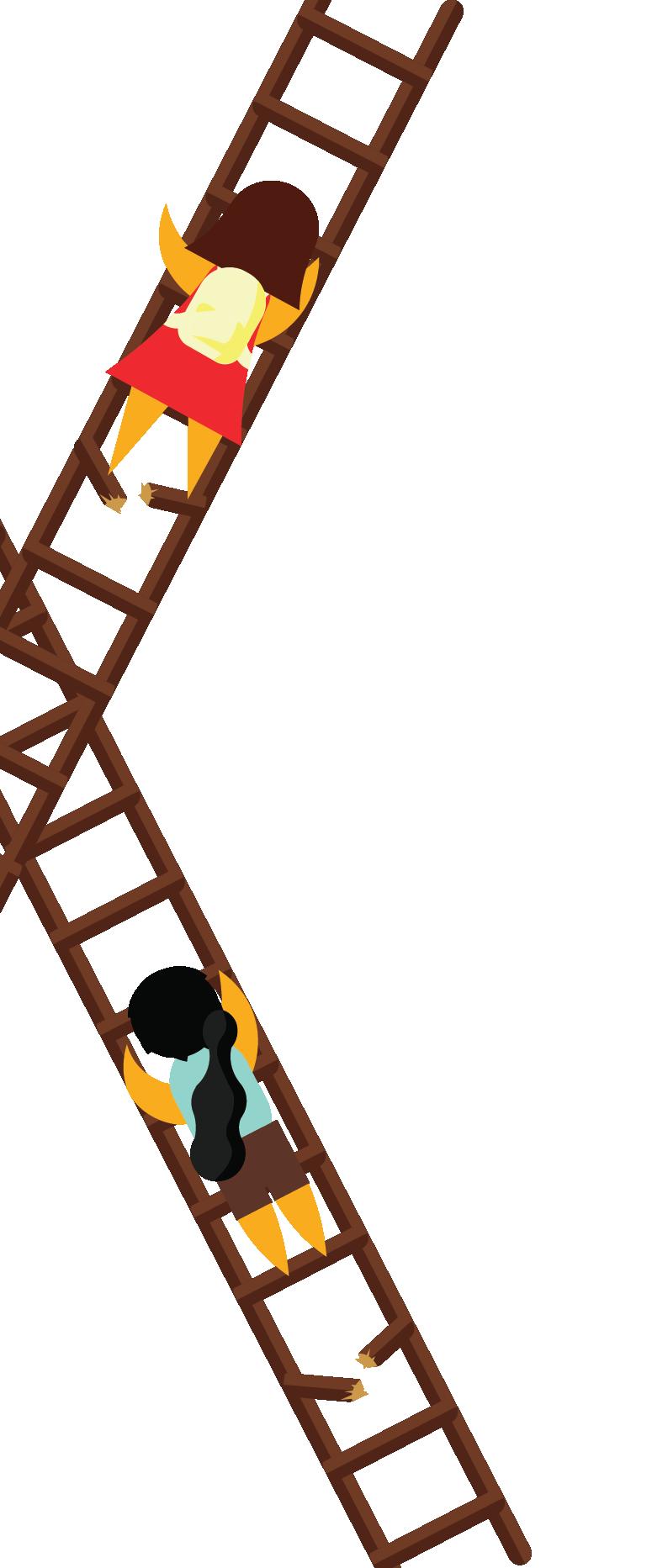
Asians in American school systems, white men and women are still 154% more like ly than Asians to hold executive roles.
According to Kim, her friend from college lived this statistic. After gradu ating from Harvard with his undergrad, medical degree and MBA, Kim’s friend was hired at Goldman Sachs, an invest ment banking company. But, after work ing there for years and being glossed over for numerous promotions and executive roles, he eventually left Goldman Sachs out of the realization that he would never be able to climb the corporate ladder as long as the institution continued to up
Kim’s friend eventually found success in the industry after leaving to create his own startup, which later became a top private equity firm valued at $800 million.
In companies, like Goldman-Sachs, where you have to know the right peo ple, have the right connections, and come from a certain background, it can be chal lenging for minorities to get their foot in
The consequences of the model minori ty myth go beyond just Asian Americans. By describing one minority as the ‘model’ the term implies that certain minorities are better than others. And, white su premacists have used this idea to shift the
“Many white people have used Asian-Americans and their per ceived collective success as a racial wedge. The effect? Minimiz ing the role racism plays

Focus
GOING FOR GOLD
 Article by Reese Taylor Graphics by Austin Yuan & Andrew Edwards
Article by Reese Taylor Graphics by Austin Yuan & Andrew Edwards

Every couple of years, nations across the globe unite around a singular experience. e FIFA World Cup and e Olympic Games have remained the most significant sporting events for decades. Just this past year, the 2022 World Cup amassed 5.4 billion views according to beIN Media Group. However, in their wake, it is clear that both events transform the countries they are held in for the worse.
Consistently the source of turmoil in the countries they are held in, e FIFA World Cup and e Olympic Games perpetuate worker exploitation, local gentrification, and a consistent economic burden. e constant construction of pro-level facilities in international locations cause far more harm than the cultural value they may cultivate.
The World Cup
is past year Qatar became one of the most controversial World Cup locations. e small middle eastern nation becoming a World Cup location sparked issues from the moment it was decided. From having the event rescheduled from its traditional summer season to the winter to rampant anti-LGBTQ policies, Qatar officials were faced with constant backlash.
One of the largest issues receiving coverage was Qatar’s treatment of both migrant workers and local inhabitants as they constructed the facilities for the event.
Qatar was awarded the 2022 World Cup in 2010 and for years global pressure mounted on the nation as it became clear that the exploitation of their Asian and African migrant workers was immense.
e nation became notorious for its “Kafala” system which keeps migrant workers in their labor economy. Amnesty International and other international labor organizations investigated the system and discovered that the system “traps migrant workers in a cycle of abuse.”
Both the World Cup and Olympics are of-





ten framed as an economic boost for the host countries but this is hardly the case. According to an article by Front Office Sports, the construction of new stadiums in Qatar cost in the range of $6.5 to $10 billion dollars. In addition, a large metro system constructed to facilitate transport between the several facilities was another $36 billion dollars and in total, the World Cup is cited as costing the nation $200 billion dollars.
Secretary General of the Committee for Delivery and Legacy, Hassan Al wadi, predicted that the addition to the economy would amount to around $20 billion dollars. Meaning that, at its best, the economic boost to the nation would barely sum up to a tenth of what was expended for the event.



However, in the end, the economic boost to the nation did not meet the expected 20 billion dollars. According to an update by Bloomberg, the World Cup added a mere $17 billion dollars to the economy (in comparison to previously cited $200 billion dollars the World Cup cost).
The Olympics
e Tokyo 2020 Olympics were no different. Just as the World Cup led to exploitation in Qatar, the Olympic Games were a source of gentrification and economic burden for Japan.
In June of 2021, Reuters reported the story of one Japanese man subject to the gentrification and displacement caused by the construction of the Olympics. Eighty-year-old Kohei Jinno was evicted and had his home destroyed to construct infrastructure for the games.
He reported to the news institution that he was only given 170,000 yen (1,500 USD) to relocate while the entire moving process cost him one million yen (9,000 USD). When thinking of the strong community of his former neighborhood Jinno said, “It was so hard to leave. It was the place I’ve lived longest in my life.”

Similarly to the World Cup, the Tokyo Olympics cost far more than the economic boost it brought to the nation. In March of last year, the CEO of the Organizing Committee Toshiro Muto reported that the Tokyo Olympics cost $13.6 billion dollars and a study by e University of Oxford would go on to conclude that the Tokyo Olympics were the most expensive in the games’ history. In total, the Olympic Games took in $7.6 billion dollars in revenue according to Sports Pro Media.

February 2O23 22
Opinions
The World Cup and Olympic Games continue to be a source of exploitation and gentrification


Destruction & Displacement
e 2022 FIFA World Cup and 2020 Tokyo Olympics are microcosms of the issues caused by world-class sporting events that choose to relocate on a consistent basis.

Between the years of the 1988 and 2012 Olympic Games, more than two million people were removed from their homes due to the construction of the facilities for the games and, according to e Centre on Housing

Rights and Evictions, often this relocation is devoid of the human rights protection residents are supposed to be afforded.
pic Games display every interval prove that they constantly conflict with this goal. ese events are an opportunity for the world, despite the border of nations and political rivalries to unify around a collective event. However, it should not be under the destruction of countless communities and lives.
reported by Massachusetts Institute of Technology professor, Lawrence Vale, these relocations are rampant with forced, unreimbursed evictions (like Jonni’s) and mass scale
Part of the United Nations Sustainable Goal is to cultivate cities and nations that hold sustainable communities and engage in sustainable development


In addition, a study displacements. and innovation.






e economic and social costs of both the World Cup and Olym-














February 2O23 Opinions 23
PRIVATE PRISONS
Article by Jack Ververis Graphics by Andrew Edwards

In 1844, a factory opened. It was called the Louisiana State Penitentiary, though it was op erated by a private company. The product was clothing. The profit was people. The goal, as one prisoner wrote, was to “eke out the dollar and cents of human misery.”
In 1870, a mine opened. Convicts—poor farmers and freedmen, captured by debt— worked in camps with a more than 40% mortality rate. When they died, their bodies were sold to medical schools. “These convicts: we don’t own ‘em,” an operator said in 1883. “One dies, get another.”
In 1967, a farm opened. Black prison ers work in fields from dusk till day. A man named Tarrell Don Hutto runs it. Hutto hasn’t founded CoreCivic, the country’s largest pri vate prison corporation yet. He will.
Private prisons, also known as for-profit prisons, are corrections facilities licensed out to corporations under contractual agreements with state and federal governments. Private prisons have been widespread since the 1980’s, when Reagan-era tough-on-crime bills led to a ballooning incarceration rate that under funded government agencies were ill-equipped to handle. So, they outsourced; now, private prisons are implemented in 26 states, and hold roughly 8% of the 2 million incarcerated Americans (and majority of detained immi grants), according to prison reform group The Sentencing Project.
They are also an omen—of corporate greed, government negligence, and the dangers of privatization. Private prisons are not the cause of mass incarceration, but a cancer on it, one that constantly threatens to grow. Private pris ons are what happen when we measure justice against profit, and profit wins.
This is most graphically seen in horrible conditions caused by cost-cutting. Private pris ons are almost universally more crowded than public ones—with profit measured by bed, af ter all, every open spot is a missed opportunity. Guards aren’t exempt from the hunt for profits either—as the Pulitzer Center reports in 2020,
“The could ency sentencing America
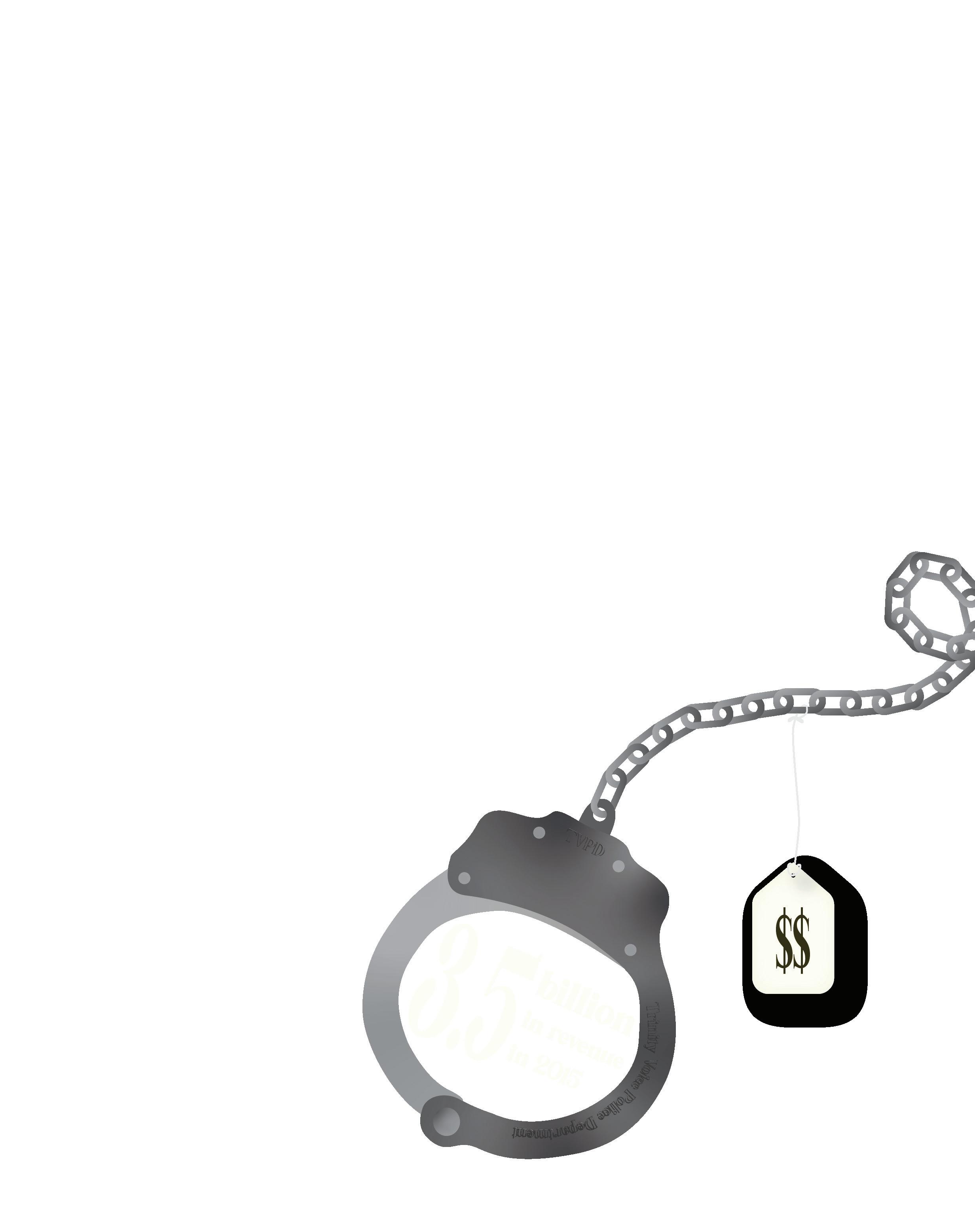
February 2O23 24 Opinions
“You just sell it like you or real estate, or hamburgers.”
- Thomas W. Beasly, CoreCivic, speaking to INC
PUBLIC PROBLEM
cause; according to the American Economic Journal, this alone erases most of the already minor cost savings offered by private contract-
you were selling cars, hamburgers.”
Beasly, co-founder of to INC in 1988
“The demand for our facilities and services could be adversely affected by . . . leniency in conviction or parole standards and sentencing practices

- The Corrections Coporation of America to investors in 2O1O

As for the rest of the money? Nobody knows. As the Brennan Center for Justice explains, private prisons have almost no oversight, in operations or finances. Some might disappear in civil lawsuits (recently, a GEO Group shareholder sued due to the company hiding tens of millions of dollars of lawsuits from investors), others in “expenses” and other
Where the profit goes, however, is a much easier question to answer. Revenue of private prisons is hard to measure—again, due to lack of oversight—but according to the Berkeley Business Review, the two largest companies made over 3.5 billion of revenue in 2015. GEO’s chairman received just a minor compensation: 3.1 million. Private prisons do not cut costs. They do not help the public. They sell the freedom of citizens so a politician, judge or CEO can have a new summer house.
Thankfully, the period of unmitigated growth that private prisons experienced from 1999 to the mid 2010’s seem to be, if not coming to an end, at least slowing. But solving the problem is not as simple as doing away with
In 2021, president Joe Biden announced the DOJ would end the use of federal private prison contracts. However, not only was the impact of this order extremely limited, due to the majority of private prisons being licensed by state, but it also led to creative workarounds. For example, a number of private prisons converted to “immigration detention centers,” centers that, due to recent anti-immigration
Fixing private prisons is not a silver bullet. Without system-wide action, mass incarceration will continue. But as long as corporations are allowed to profit off of misery and injustice, people who don’t deserve to suffer will. From 1844 to 2023, private prisons have been
February 2O23 Opinions 25
. . . .”
Opinions
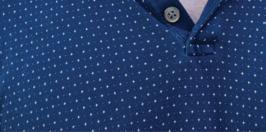
CHEATGPT


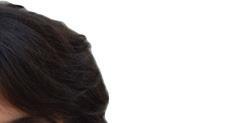


to increase, and it will only get easier to use it to cheat on assignments.
It is almost midnight and the Canvas calendar still had one assignment left to do—an eight-page research paper. While most students spend hours outlining, writing and editing their research papers, a new and accessible website called ChatGPT can do the same process in seconds. As the clock ticks and the procrastination culminates, the quickest x seems to be typing the topic into ChatGPT and using the essay it spits out.
e AI software collects information from a multitude of sources across the internet in order to craft a unique essay, so far undetectable by plagiarism checkers such as Turnitin. e website can also respond to questions, write emails and generate lines of code. As technology advances, the classroom must make changes in response.

Cheating on assignments is not a new problem. A 2018 study found that as many as 31 million college students worldwide have paid third parties to complete their assessments. However, with the development of ChatGPT, students can get the same bene ts quicker and cheaper. e use of AI softwares is only going

While software that can detect ChatGPT is being developed, the use of plagiarism checkers is not sustainable; the AI will develop past them, leaving them useless. ChatGPT or something similar will always be a resource for students, so instead of trying to defeat it, accepting and integrating it into the classroom will be more productive.
One method is called “ ipping the classroom.” is would mean students would watch lectures and take notes at home, then complete their usual homework in class. While this could work on some extent, it is not fully possible. Assignments such as a research paper are meant to build students’ ability to scour through sources in order to complete a cohesive paper. is process should take a long time and cannot be fully completed within the connes of a 45-minute class period.
A more e ective method would be using ChatGPT as a tool similar to other sources on the internet like Wikipedia. Currently, ChatGPT is not able to write pages of an essay with deep re ection. Students could use ChatGPT as a starting point and sift through the information it gives to see what is viable.
WORD ON CAMPUS

is process will teach students how to use the AI e ectively instead of copying and pasting the information in. If the assignment given requires a deep analysis, ChatGPT will be unable to go into the depth that is required; instead, it will only be used as a tool.
“If we are thinking about the writing part of [ChatGPT], then there is continued emphasis on process and foregrounding process in the classroom—the generating of ideas, the organization, what is your thesis, and how are you making that argument,” Director of Learning and Instruction Stephanie Dyrden said. “I think it is going to make us as educators really re ect on what do we want to know and what is it is that we’re asking of students.”
Currently, ChatGPT is blocked on Trinity’s Wi-Fi, so students cannot access it from their computers. However, this could easily be countered by turning on a cell phone. e school will continue to have the website blocked, but it is looking into more permanent solutions.



eleadeditorialexpressestheopinionof the Trinity Voice editorial sta . Please send commentstovoice@trinityprep.org.


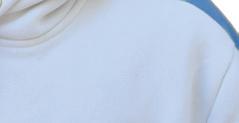
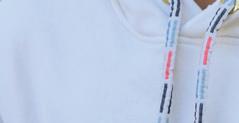










Is ChatGPT more helpful or harmful for class?


 Photos by Anna Miliotes
Photos by Anna Miliotes
“For research, it is helpful because it acts like a search engine. However, when people use it to write their essays, it becomes harmful.”
February 2O23
- Anthony Miceli, Senior
“I think it is harmful because Trinity prides itself on integrity and following a honor code, and ChatGPT goes against those values.”
- Zara Kalmanson, Sophomore
“Helpful because it can help you find an answer on a topic you want to find more about.”
- Noyan Tekin, Seventh
grade
Campus needs to combat the use of new software
GOODBYE GIRLBOSS
/pronounce/ gurhl bos
1. an unmeetable standard for women in work and academic settings
Article by Amanda Rose DeStefano Graphic by Lia Garibay
Girlboss, a term coined in 2014 by Sophia Amoruso, has taken social media by storm in recent years. In her book #Girlboss, Amoruso, the founder of fast-fashion clothing brand, Nasty Gal, defined a girlboss as a woman “whose success is defined in opposition to the masculine business world in which she swims upstream.”
While on face value this definition seem complimentary to working women, the message has been lost in translation. Now, a girlboss is made up of the impossible standards of a beautiful, thin, white woman who is usually donning a pink pantsuit and sky-high stiletto heels. Women have subscribed to a message that preaches how putting up with sexism, looking beautiful and working much harder than your male peers can earn you a spot at the table.
Girlboss culture is infantilizing and isolating. Many women find the image of being a girlboss insulting. It sends a mes sage that women who are in leadership posi tions are unnatural. They are not bosses, but merely girlbosses.
This phenomenon has encouraged women to become shapeshifters. Now, instead of just working a job while juggling subtle sexism, women are expected to navigate an internal ized demand to become the “ideal” working woman. Women in school and working envi ronments are forced to mold themselves into a perfect pair of heels and pristine pink pantsuit, just to get their foot in the door. The incessant need to live up to the unattainable girlboss standards have made working as a woman and gaining leadership positions much more diffcult. It became more than just a 9-to-5; it transformed into a lifestyle.
The girlboss aesthetic, used almost inter-


changeably with a “hustler” attitude, has incentivized the need to overwork oneself in order to get ahead of, or even be seen as equal to, male co-workers. While this attitude seemed to provide an outline for women in the workplace to labor their way out of sexist conditions

and reach desired roles, the girlboss culture transformed into a system that rewarded poor working conditions and sexist conformity. Girlbossing has become the act of biting your tongue in times of injustice— holding out for the hope that if you put up with enough, the ends will justfiy the means. Former chief operating officer of Meta, Sheryl Sandberg, advises this stratey in her 2013 book Lean In. By just leaning into sexism and expeted corporate identities, women could work their way up the ladder. Instead of fighting against an oppressive institution, women could work with it. Toxic advice like this, coming from successful women, lured others into tolerating much more and earning much less.
Instead of tearing down and rebuilding the environments we live in, we should instead tear down and rebuild ourselves to fit in. This call to action caused women to leave themselves behind for the glitz and glamour of the girlboss.
Abandoning the toxic confidence culture abundant in the girlboss movement is key to making a seat at the table for all women. Social media trends pink-washing successful women were designed to be intriguing for young women, but are full of empty promises. We are shown beautiful and prosperous leaders who were able to become powerful without giving up their femininity, but they gave up much more.
When women take on the role of the girlboss, they give up any chance of gaining respect in work and academic settings. is demanding identity fails to challenge conformity and sexism, creating the facade of institutional change when just the opposite is true. The patriarchy existing in corporate America sells us personalities all the time. It’s time we buy ours wisely.
February 2O23 Opinions 27
SHOCK ON THE FIELD
Near death experience hits the football world
Article by David Steinberg Graphic by Caden Liu









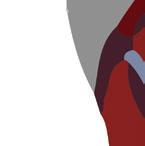











Weeks following one of the most shocking injuries in NFL history, football and non-football fans alike have raised questions as to how an ordinary play almost turned fatal. In a Monday Night Football matchup between Buffalo and Cincinnati, Bills safety Damar Hamlin suddenly collapsed on the field after delivering a routine hit, suffering a cardiac arrest on the spot. During live television coverage, medical officials treated Hamlin with CPR and an AED, which would end up saving his life. Making national headlines for the wrong reason, the injury proved to be yet another instance of freak accidents occurring in contact sports. Following the hit, a record breaking 23.8 million viewers tuned into the ESPN coverage for updates regarding the well-being of the promising 24-year-old. Among those watching the game was Athletic Director and Head Football Coach David Langdon, who knew by the response that this was not an ordinary injury.
“Just the way they were moving around, it didn’t seem like it was something surgical,” Langdon said. “One of my first things I wondered, and even asked my wife, was if he had a cardiac arrest, because I’ve actually experienced that with a player before, and it was the worst day of my life.”
Since 2015, the NFL has tracked injury data in three categories, concussions, ACL tears, and MCL tears. From 2015 to 2021, there have been 1,596 concussions, 919 MCL tears, and 397 ACL tears. Despite the large numbers, each category has seen a decrease during the six-year span, largely due to the improvement and prioritization of safety in the NFL.





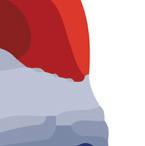


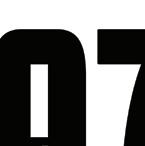


Regardless of medical advances, nothing could have stopped this injury from happening. While the full details have yet to be confirmed, several doctors have suggested that this was a case of Commotio Cordis, which occurs when blunt trauma to the heart leads to ventricular fibrillation, a type of iregular heart rhythm. Orlando Health Emergency Medical
Korey Stringer Institute, the condition, while quite rare, is mostly seen in athletes of ages 8 to 18 who play baseball, hockey, lacrosse, or other sports involving projectiles. e thin chest cavity of teenagers increases the risk due to the reduced barrier between the heart and mechanism of impact.







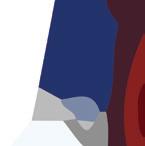



Hamlin’s injury headlined social media platforms such as Instagram, Twitter and TikTok. Trinity sophomore and linebacker Jackson Altomare first saw the injury on Instagram and was in awe of what he had just witnessed.
Specialist Sean Isaak has seen many cardiac arrest and Commotio Cordis patients in the ER, and said that quick CPR, and an AED if necessary, can be the difference between life and death.
“When someone comes into the ER in cardiac arrest, we never know what caused it,” Isaak said. “And the fact that they did CPR right away is the reason he survived. If someone doesn’t do CPR, he’s dead. Basically, the heart stops and there’s no pumping blood to any part of the body.”
According to the University of Connecticut’s








































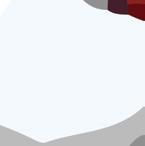
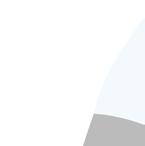








kid died for a minute out there,”


































“It just makes you think, that kid died for a minute out there,” Altomare said. “I mean, that could’ve been me.”
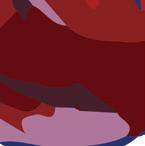
Youth football has seen a significant decrease in participation over the past 15 years. According to data from the Aspen Institute and the National Federation of State High School Associations (NFHS), the number of football players aged 6 to 18 dropped by 600,000 from 2008 to 2018. Both Altomare and Langdon believe the injury to Hamlin could affect this number even more, with parents hesitant in letting their kids play.


In an effort to prevent injury on the field, Trinity has taken many precautions recently to protect its athletes. According to Langdon, this includes the purchasing of NFL approved helmets and equipment, as well as having an athletic trainer present at every game for a quick response to injury.




Despite the risks involved in football, it still remains the nation’s most watched sport. Langdon has been involved in football for just about his whole life, and believes the bond and brotherhood that the game has to offer is the reason why the sport is so unique.
“It’s just different,” Langdon said. “You can watch it, you can enjoy it, but unless you experience it, it’s hard to explain. I’ve had a football season for 47 years of my life, as a player and coach, and it’s been spectacular.”
February 2O23 Sports
Stats from IQVIA via NFL.com, based on 2015-2022
A SECOND SHOT
MS team provides new opportunities for all players
Article by David Hull
Kortman
One of the worst feelings for a middle schooler is to not be included, whether it be in the class or on the court. With the addition of another middle school basketball team, the athletic department worked to solve this issue.

Trinity’s 6th and 7th grade basketball team had nearly 40 students try out in early November. Finding it important to support all of these players, the developmental team was formed for those who did not qualify for the team, but still wanted to participate. The new team will serve as an alternative to the main team, which is meant to focus on performance in game, rather than initial player growth. Co-coach Eric Zaytzeff believes this new team will have a major impact on the program by keeping more students interested in the sport.
“I don’t want to extinguish anyone’s desire to play and learn basketball,” Zaytzeff said. “[The addition of the developmental team] was important to not discourage a kid who might have been on the cusp of making the team from giving up basketball altogether.”
Fourteen students were placed on the competitive team, and the remaining were put on the developmental team. Sixth grader Ty Bogey went into the tryout with little prior basketball experience, and although he didn’t make the competitive team, appreciated being given the chance to play.
“I didn’t expect to make the team during tryouts,” Bogey said. “But I was excited that [the developmental team] would give me an opportunity to play and practice.”
The competitive team had a very successful season and placed third in The Citrus League. The developmental team, coached by Head of School Byron Lawson, focused on building players’ fundamental skills instead of working on in-game scenarios.
Athletic Director David Langdon was a strong supporter of the addition. Langdon said that in his past years of coaching and playing sports, he has seen many of his players have a very rough start, but when given a chance,

have any previous basketball experience. Seventh grader Derek Hopkins said that the new team will be good for new players this year and will give them a better chance at making the team next year.
“It’s great for people who are just starting to play basketball and wouldn’t be good enough to make the actual team,” Hopkins said. “This lets them improve so that next year they can have a better chance to play.”
The abundance of students trying out for middle school athletics is not common for many schools in the area. Shortages of players in other schools have either resulted in the combination of grade level teams, or no team at all. Langdon attributes Trinity’s success to the extra work done by the athletic department and those who support it.
“We have a different philosophy [from other schools],” Langdon said. “Everybody wants numbers, but not everybody wants to have to do the extra work of finding practice locations for every team, people to help out and other things of that nature.”
Even though only one team is labeled as developmental, Zaytzeff said that all middle schoolers on both teams still needed to learn some of the basics.
According to Zaytzeff, both teams have shown an increase in skill and general knowledge of the game, which will set them up for future years and coaches.
grown into great athletes over time.
“The development of every kid is different,” Langdon said. “We wanted to make sure that we gave kids who didn’t make the team the opportunity to develop and still have an opportunity to play.”
According to Zaytzeff, the skill level in students who tried out varied, and many didn’t
“At the beginning, some of these kids didn’t necessarily know what the fundamental rules were, but now everyone does,” Zaytzeff said. “I think there’s been a lot of growth in the knowledge of basketball itself, but also the execution of it.”
Langdon said that every decision the athletic department makes is for the benefit of Trinity’s students and their experience while participating in athletics.
“We’re always trying to evolve into what we can do best to get the most kids out and get them the most playing time,” Langdon said.
Photo by Olivia
February 2O23 Sports
Boen Dong (left) and Carson Wiener (middle) watch on as Dylan Clark (right) finishes a layup. The three are a part of the competitive 6th and 7th grade team, who practice seperately from the newly formed developmental team.
PUZZLE PAGE


Try to solve these Trinity-themed puzzles!
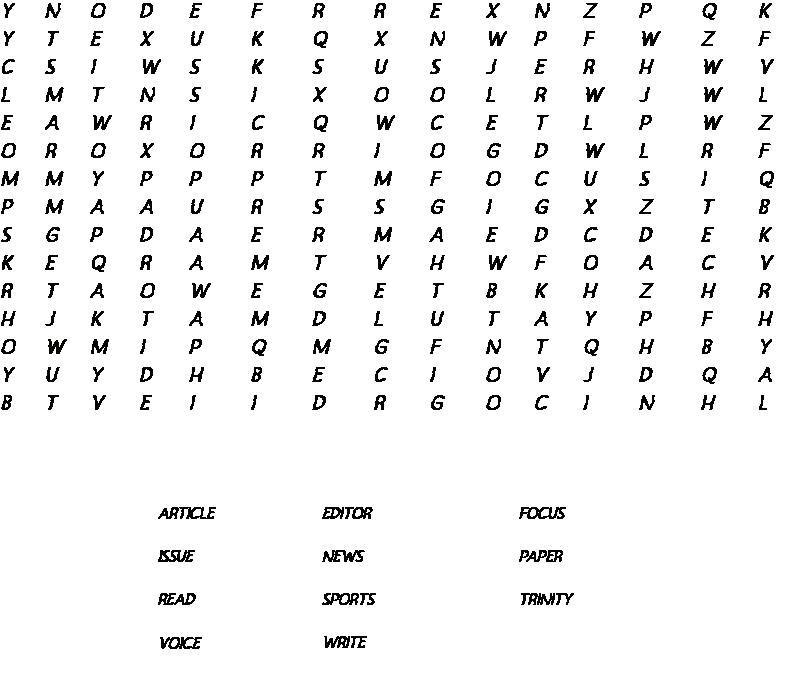





Help Nutty find his snacks!!

Scan QR code for answers





February 2O23 Puzzles 3O
Puzzles by Aetant Prakash, Sreekar Nagulapalli and Abby Hernan Graphics by Amy-Ruth Gyang and Caden Liu












February 2O23 Advertisements 31
PHOTOGRAPHY EXPOSITION Spring Showcase


























February 2O23 Photos 32
Anna Miliotes
Andrew Edwards
Olivia Prince
Andrew Edwards









































































 Article by Ava Savino
Article by Ava Savino


















































































































































































































 Graphics by Andrew Edwards
Graphics by Andrew Edwards














 Article by Lucy Chong
Graphic by Lia Garibay
Article by Lucy Chong
Graphic by Lia Garibay




 Article by Reese Taylor Graphics by Austin Yuan & Andrew Edwards
Article by Reese Taylor Graphics by Austin Yuan & Andrew Edwards



































































 Photos by Anna Miliotes
Photos by Anna Miliotes























































































































































